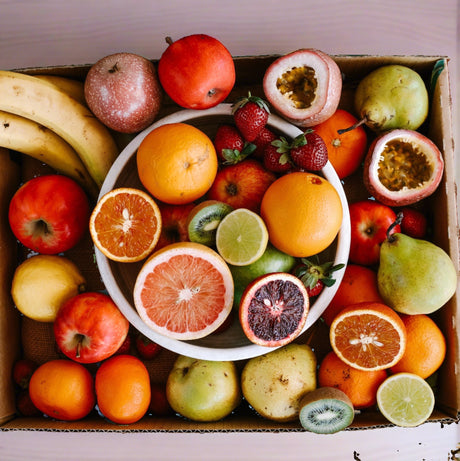
A number of Australian foods have been found to contain the RoundUp chemical glyphosate, including bread, cereal and baby food.
Written by Kathleen Donaghey
Australians are eating the RoundUp chemical ‘glyphosate’ for breakfast and parents are unknowingly feeding it to infants in baby food.
The so-called ‘safe’ weed killer ingredient, which has been linked to cancer and sparked multi-million-dollar law suits, has been detected in grain-based foods by Australia’s food standards agency.
Glyphosate was found in multi-grain, wholemeal, spelt, rye and white breads, savoury biscuits and crackers, and rice-based breakfast cereals, flours and crackers in Food Standards Australia New Zealand’s (FSANZ) latest Total Diet Survey.
It was also found in infant baby cereal, which is a rice-based product usually offered as a first solid to babies learning to eat.
Cereals and cereal products – in particular bread – was the “major contributing food category to glyphosate dietary exposures” for Australians, and for babies it was infant cereal.
However the food standards agency said glyphosate levels were well below accepted dietary limits and concluded there was “no public health and safety concerns for most substances”.
The 25th Australian Total Diet Survey sampled 88 foods for a wide range of herbicides and pesticides and found contaminant levels were “generally low, with a large proportion of food supplies containing no detectable residues”.

Infant rice-based cereal has been found to contain glyphosate, the active chemical in the controversial herbicide RoundUp. Photo: Getty
But the agency has come under fire for its unchanged position on safe levels of glyphosate amid mounting calls for Australian regulators to review the chemical’s use and potential carcinogenic effects on people.
Glyphosate, the active chemical in the weed killer RoundUp, is the most widely used herbicide in the world, with more than 6 billion kilograms applied over the last decade.
In a recent landmark case, a US couple was awarded $2 billion damages when a California jury found their cancer was caused by exposure to RoundUp.
About 13,400 US plaintiffs are suing the company Bayer, which bought RoundUp maker Monsanto, while a Melbourne gardener has launched Australia’s first legal case and councils are re-assessing their use.

The chemical glyphosate, used in RoundUp, is the most widely used herbicide in the world. Photo: Getty
Human exposure to glyphosate is not limited to RoundUp, the popular brand of backyard and commercial weed killer that consumers have been repeatedly told is safe by the company and government regulators.
The chemical is also an active ingredient in more than 500 products approved for use in Australia, many of which can be found on supermarket and hardware store shelves and used by backyard gardeners.
Of the weed killers on the shelves in Bunnings, for example, all but a couple of products from two brands – Brunnings and Richgro – listed glyphosate as an active ingredient.

Most of the backyard weed killer products on the shelves in Bunnings contain the active ingredient glyphosate which is linked to cancer in humans. Photo: TND
Public health academic Dr Bruce Armstrong, from the University of Sydney, said it was time for regulators to “get real” about glyphosate instead of “point-blank denying the evidence”.
The Australian Pesticides and Veterinary Medicines Authority (APVMA), which regulates agricultural chemical products, insists products containing glyphosate “can continue to be used safely according to label directions” while Food Standards Australia New Zealand works closely with the APVMA to set safe levels of chemical residue exposure and dietary limits.
Both agencies offered a statement to The New Daily saying they were in step with international authorities and regulators and were monitoring developments.
However, neither has announced any reviews on its use in Australia.
“I think the most important thing is for the regulator APVMA to stop saying there’s no evidence that it causes cancer and get real and examine it so the public has confidence,” Dr Armstrong said.
“The first place we need to start is to work out why the regulator is making a decision that seems to go against the evidence produced by the International Agency for Research on Cancer which is the pre-eminent cancer research agency.
“They need to take expert international opinion seriously and carefully re-evaluate and do it in an open and transparent manner.”
Friends of the Earth’s spokesperson on food, Lou Sales, said the food standards agency should re-evaluate what was considered safe levels of glyphosate in people’s diets.
“I don’t think the evidence supports the continued use of glyphosate on our foods,” Ms Sales said.
“There needs to be an independent review of the safety of glyphosate, and both agencies, and how they have reached the decisions they have.
“I think both agencies are way too close to industry, especially the APVMA which gets funds from licensing pesticides.
“They have both failed to do any sort of review on glyphosate, despite the international findings, which is concerning.”
A new study published in the journal Mutation Research this month linked exposure to glyphosate to an increased risk of non-Hodgkins lymphoma in humans, concluding there was a “compelling link” between the two.
The World Health Organisation’s (WHO) International Agency for Research on Cancer (IARC) – considered the foremost authority on cancer research – has also concluded it is “probably carcinogenic”, a high-level assessment second only to “carcinogenic”.
Jane Bremmer, from the National Toxics Network, accused the agencies of dismissing the evidence.
“Glyhosate is now found in our food, air, water and bodies. Exposure is clearly prolific, widespread and systemic,” Ms Bremmer said.
“The APVMA, state and local governments continue to allow this pesticide to be used in public places, schools, childcare centres, parks and playgrounds in the urban environment, and by consumers without adequate safety protections.
“As such I think it is inevitable that legal cases in Australia will rise.”
Professor of Epidemiology at Curtin University, Lin Fritschi, who was part of the IACR working group on glyphosate, raised concerns about product labelling.
“What worries me is that people who are using glyphosate are often not aware of the safety instructions because APVMA regulations do not specify that safety information has to be on the bottle,” she said.
“The regulations should be changed so that safety information for all chemicals is on the product itself in order to protect the Australian public.”
At FreshBox Organics we’re uncompromisingly certified-organic, you won’t find glyphosate-residue in our produce. Browse our weekly boxes here: Seasonal Fruits & Veggies - Food Box Delivery - FreshBox – FreshBox Organic Delivery
















